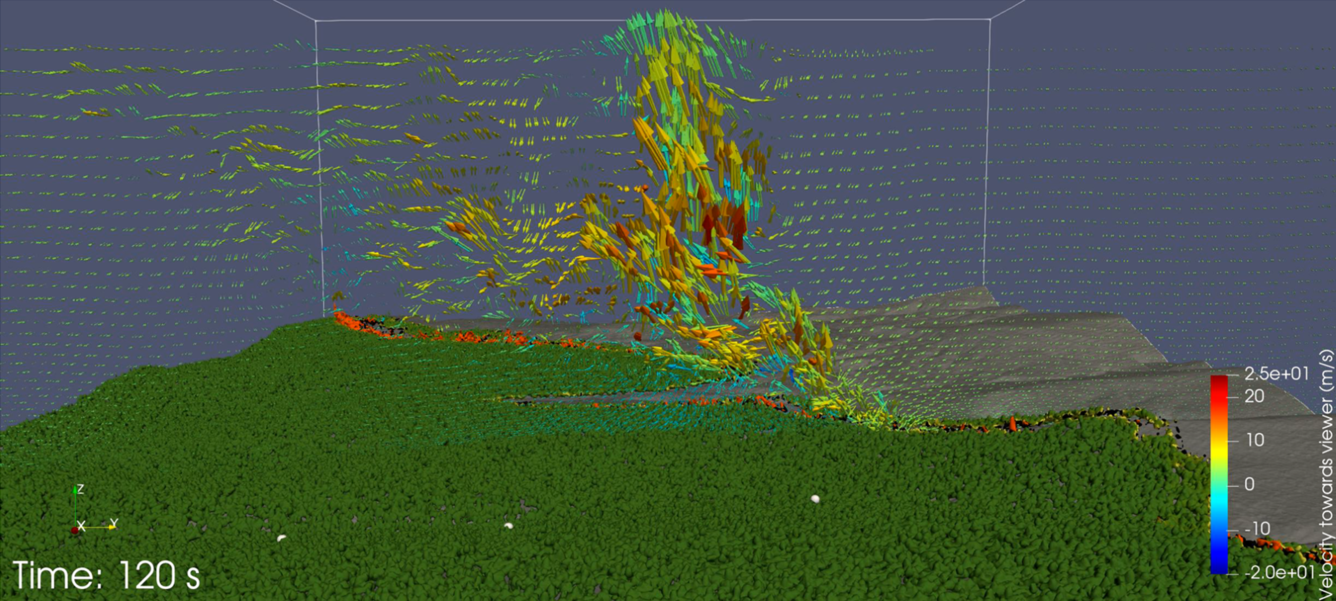Modeling to Support Proactive Approaches to Wildland Fire

Detailed Description
Screen shot visualization of wind direction and velocity from a coupled/fire atmosphere model run of a wildfire (Dude Fire).
As the fire community looks towards proactive approaches to manage the growing challenges of wildland fire, the importance of science-based decision support is increasing. In wildland fire and land management, the decision space is different when determining proactive management strategies compared with reactive crisis management, just as they are in any field. There is an expectation that decision makers have weighed the pros and cons of their action (or lack of action) and are optimizing their actions to meet objectives, reducing costs (not just monetary costs), and avoiding unintended consequences. Whether it is assessing possible benefits of fuels treatments or planning and analyzing prescribed fires, next generation coupled fire atmosphere models can contribute to the science basis for land management decisions. The requirements on these models are that they capture the influences of the heterogenous fire environment on fire behavior with sufficient detail to enable decision makers to understand the consequences of the various possible decisions. Continual improvement of the science basis and availability of decision support requires a multi-fidelity modeling approach where detailed models can continuously help us increase our understanding of the relationship between fire behavior and its environment in current or future climate scenarios, and faster running tools can encompass this understanding in an accessible tool.
Sources/Usage
Public Domain.

